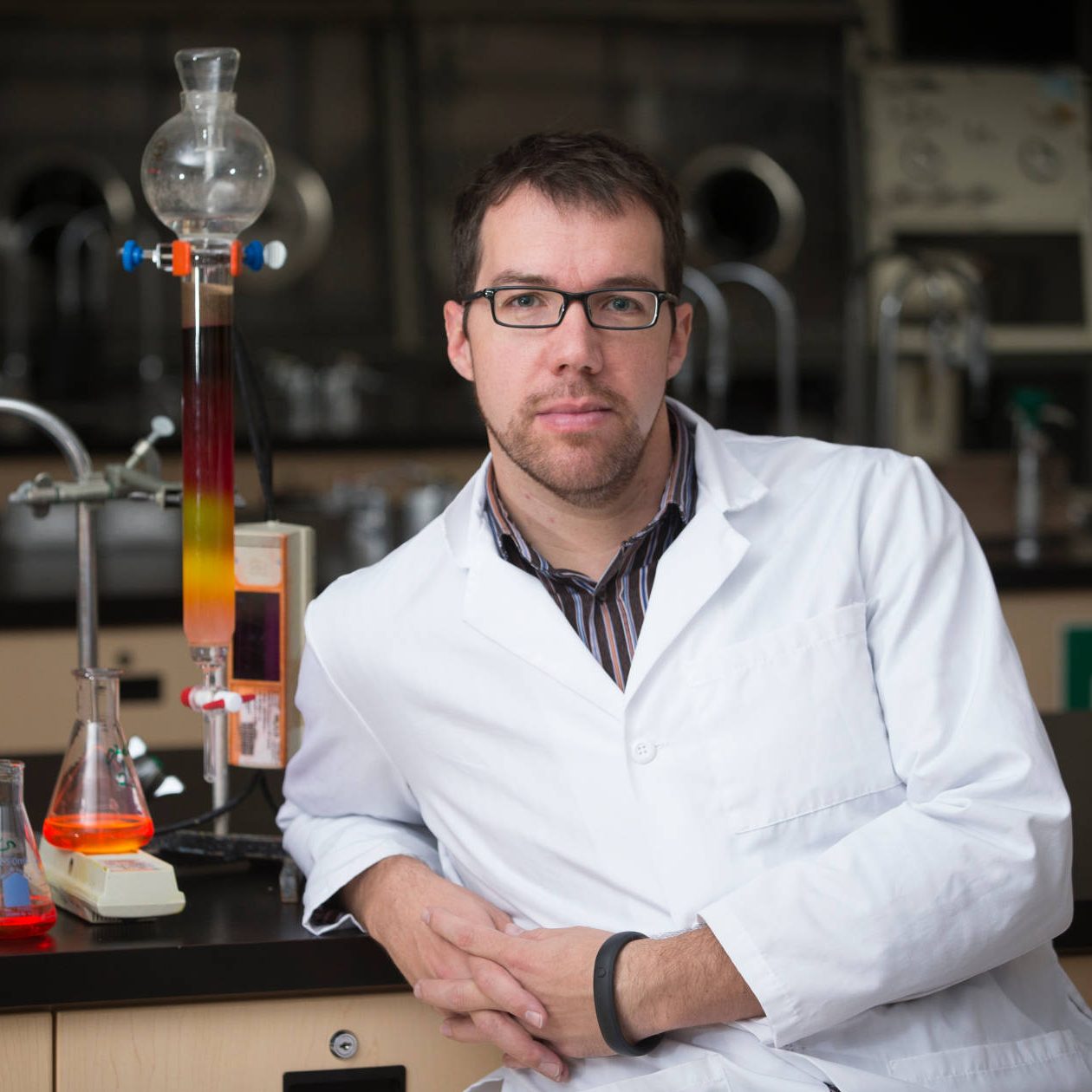Plugging into the Sun and the future of next-generation light harvesting technologies
March 30, 2017
Brian Koivisto
The dye-sensitized solar cell (DSSC) represents a promising next-generation photovoltaic technology. In addition, the DSSC manifold provides an exceptional platform to further appreciate photoinduced electron transfer and the fundamental features required for effective light-harvesting. The dye molecule is a key component in the DSSC and organic dyes have become attractive targets as sensitizers owing to their inexpensive synthesis and tunable optical and electrochemical properties.
Organic DSSC dyes are comprised of a redox-active donor/chromophore (D) that is connected, through a conjugated linker, to an acceptor (A) capable of anchoring to titania (TiO2). Adjusting the length of the conjugated spacer tunes the energy of the frontier molecular orbitals and concomitantly shifts the absorption profile for the desired application. π-conjugated bridges containing oligothiophenes, are the most common for this application owing to their excellent charge transport properties. Interestingly, attempts to replace the π-spacer with non-innocent π-spacers (e.g. fluorophores, chromophores and redox-active components) have received minimal attention. This presentation presents our recent achievements in the development of organic dyes possessing BODIPY ‘non-innocent’ π-spacers.
Bio
After finishing his BSc at the University of Waterloo (2000), and PhD at the University of Victoria (2006), Dr. Koivisto held an NSERC PDF position at the University of Edinburgh investigating the utility of molecular machines for light harvesting (2006-2008). Dr. Koivisto then joined the Institute for Sustainable Energy, Environment and Economy at the University of Calgary (2008-2011). There he continued to focus his research interests by investigating the conversion of light energy into solar fuels. In 2011, Dr. Koivisto joined the Department of Chemistry and Biology at Ryerson University. As an associate member of Ryerson’s Centre for Urban Energy, Dr. Koivisto’s work investigates the design and fabrication of dye-sensitized solar cells using bio-inspired light-harvesting dyes. Since 2011, Bryan has established a vigorous research program to better appreciate the utility of organic dyes as photovoltaic light-harvesters. After receiving promotion to Associate Professor in 2014, Dr. Koivisto has continued to embrace mentorship in scientific discovery, and has developed and led a number of groundbreaking programs designed to promote science literacy and non-traditional research at the university and community levels.
